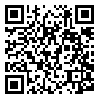BibTeX | RIS | EndNote | Medlars | ProCite | Reference Manager | RefWorks
Send citation to:
URL: http://jdm.tums.ac.ir/article-1-315-en.html
Background and Aim: With the introduction of porcelain veneers to fulfill patients’ esthetic needs, question raises about the ability of the veneers to cover the substructure discoloration. It seems that using shade modifiers under the porcelain veneers can neutralize the discoloration. The goal of this study was to determine the efficacy of shade modifiers in correcting tooth discoloration, when used with resin cements under porcelain veneers.
Materials and Methods: In this experimental study, 60 porcelain discs with two thicknesses of 0.7 mm and 2 mm (30 porcelain of each thickness) were made from ceramco porcelain powder. 40 of them were in A2 shade and 20 were made by the mixture of A2 shade porcelain powder and porcelain stain to represent tooth discoloration. Then all the laminate discs (0.7 mm) were cemented over the 2 mm thick discs to make groups of 10 samples as followed: 1- The first group: laminate discs + resin cement + 2mm thick discs with A2 shade. 2- The second group: laminate discs + resin cement + 2mm thick discolored discs. 3- The third group: laminate discs+ resin cement+ shade modifier+ 2mm thick discolored discs. The color of 30 specimens was measured by spectrophotometer in 2 conditions. 1- To include the specular reflection (SCI). 2- To exclude specular reflection (SCE). In each condition the specimens were measured on both a white background (W) and a black one (B). The mean color differences (E) of each specimen in the second and third group with the specimens of the first group were calculated. Data were analyzed using Paired sample t-test and P<0.05 of significance.
Results: Color measurements showed that in SCIW condition L was significantly different among the three groups except the first and the third. In SCEW condition all the parameters showed significant differences. In SCIB condition, E was not significantly different between the second and the third groups. Hue (h) parameter wasn’t different between groups one and three neither was chroma (c) among the three groups. In SCEB condition, E was not statistically different between groups two and three.
Conclusion: Considering the statistical results, shade modifier couldn’t completely match the color of the specimens in the third group with the first one. But, the lower E for the third group comparing to the second one means that shade modifier was successful in reducing the effect of substructure discoloration.
| Rights and Permissions | |
 |
This work is licensed under a Creative Commons Attribution-NonCommercial 4.0 International License. |




